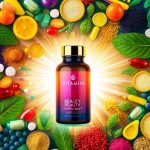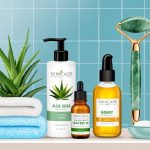10 Beauty Secrets Dermatologists Wish You Knew for Glowing, Healthy Skin
Mastering Cleansing for Clear Skin
Daily cleansing is the foundation of clear skin and directly impacts how well other skincare products work. The right face wash method helps remove oil, sweat, pollution, and dead skin cells without causing dryness or irritation.
Gentle Cleansers and Their Benefits
Using a gentle cleanser is critical for maintaining the skin’s natural barrier. These cleansers remove impurities, excess sebum, and traces of makeup without stripping away natural oils that keep the skin hydrated.
Dermatologists recommend avoiding harsh soaps or abrasive scrubs, as these can trigger irritation, redness, or even worsen breakouts in sensitive skin. Gentle cleansers often include ingredients like ceramides, glycerin, or hyaluronic acid to support skin moisture.
Non-foaming formulas are particularly beneficial for those with dry or sensitive skin. According to the American Academy of Dermatology, washing with a gentle, soap-free cleanser and using lukewarm water helps prevent the skin from drying out.
Individuals should look for fragrance-free and non-comedogenic options to reduce the risk of allergic reactions or clogged pores. Using a gentle cleanser daily helps prepare the skin to better absorb serums and moisturizers.
Consistency is more important than intensity—sticking to a mild product yields better long-term results than over-cleansing or using harsh ingredients.
When to Double Cleanse
Double cleansing involves washing the face in two steps using different products. First, an oil-based cleanser or cleansing balm dissolves sunscreen, waterproof makeup, and excess sebum.
Next, a water-based gentle cleanser removes remaining dirt and impurities from the skin’s surface. This method is particularly helpful for people who wear heavy makeup, sunscreen, or live in urban environments with high pollution.
Double cleansing ensures thorough removal of all residues that can clog pores and cause breakouts. However, not everyone needs to double cleanse every day—those with minimal product use or very dry skin may only need a single gentle cleanse at night.
When choosing products for double cleansing, it’s important to select non-irritating formulas tailored to individual skin needs. Lightweight oils and mild, non-drying cleansers are ideal.
Overdoing double cleansing or using harsh removing agents can cause dryness, so adjust frequency based on your skin’s condition and response.
The Art and Science of Exfoliation
Exfoliation is a crucial skin care step that helps reveal brighter, smoother skin by removing dead skin cells and debris. Proper exfoliating practices support cell turnover and can make other treatments and products more effective.
Physical vs. Chemical Exfoliants
There are two primary categories of exfoliants: physical and chemical. Physical exfoliants use granules or brushes to manually slough off dead cells from the skin’s surface.
Common examples include scrubs with microbeads, sugar crystals, or a soft washcloth. Chemical exfoliants, such as AHAs and BHAs, loosen the bonds between dead cells using acids or enzymes.
These exfoliating acids penetrate the skin more evenly, making them particularly effective for dullness and uneven texture. Some dermatologists recommend chemical exfoliants over physical options because they are less likely to cause irritation when used correctly.
It’s important to recognize skin type and concern when choosing an exfoliation method. Sensitive or acne-prone skin often responds better to gentle chemical exfoliants, while those with thicker or oilier skin may tolerate physical options better.
Finding Your Ideal Exfoliation Frequency
Over-exfoliating can damage the skin barrier and trigger sensitivity, redness, or breakouts. Conversely, not exfoliating enough may leave skin looking dull or contribute to clogged pores.
The ideal frequency depends on skin type, exfoliation method, and product strength. For most, chemical exfoliants like AHAs or BHAs can be used two to three times per week.
Those with sensitive skin may need less frequent use, while individuals with oily or resilient skin might tolerate exfoliating products more often. It’s important to monitor the skin’s response and adjust accordingly.
Signs you may be exfoliating too often include irritation, dryness, or increased breakouts. Dermatologists often advise starting slowly and increasing frequency only as tolerated.
AHA, BHA, and Exfoliating Acids
Alpha hydroxy acids (AHAs), such as glycolic and lactic acid, are water-soluble and work at the skin’s surface to smooth and brighten. They are suitable for dry, sun-damaged, or aging skin since they aid with texture and hydration.
Glycolic acid, for example, is noted for its ability to smooth and brighten skin.
Beta hydroxy acids (BHAs), like salicylic acid, are oil-soluble and penetrate deeper into pores. BHAs are particularly effective for oily and acne-prone skin since they dissolve excess sebum and help clear clogged pores.
These chemical exfoliants are a mainstay in treatments for blackheads and acne.
When adding any new exfoliating acid to a routine, it’s best to patch test and follow sunscreen practices, as skin can become more photosensitive after exfoliation. Look for products labeled with their acid content so you can tailor the exfoliating benefits to your skin’s unique needs.
Hydration and Moisturization Essentials
Maintaining skin hydration and choosing the right moisturizing products are fundamental parts of a healthy skin care routine. Ingredients like hyaluronic acid, ceramides, and glycerin play a major role in skin health.
Understanding the distinction between hydrating and moisturizing can influence product choices and skin outcomes.
Best Moisturizers for Your Skin
Selecting the best moisturizers depends largely on a person’s skin type and individual concerns. For those with dry skin, heavier creams rich in ceramides or fatty acids work well to restore the skin barrier and prevent water loss.
Gel-based moisturizers and lightweight lotions are often preferred by people with oily or acne-prone skin, as they deliver hydration without clogging pores. For sensitive skin, look for fragrance-free formulas and avoid potential irritants.
People with mature skin can benefit from creams with added antioxidants to support elasticity and soothe environmental stress. For more guidance, visit this list of top skin care ingredients.



